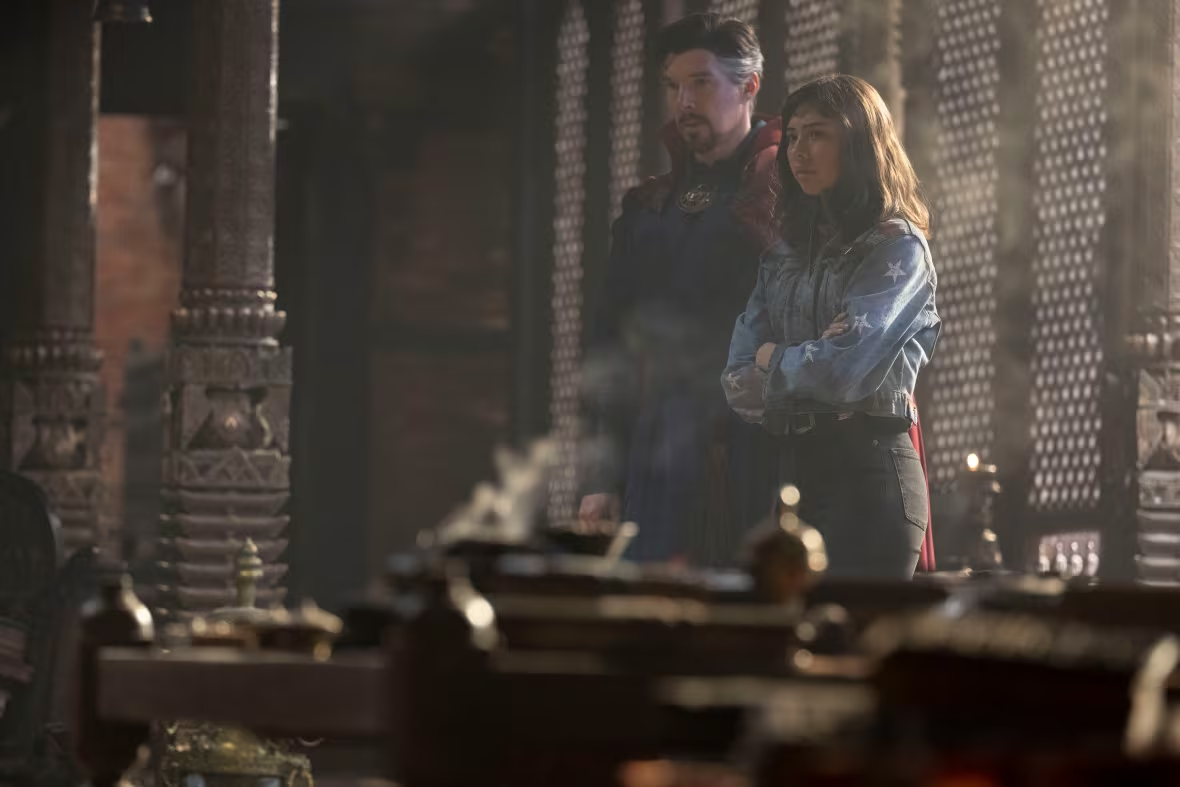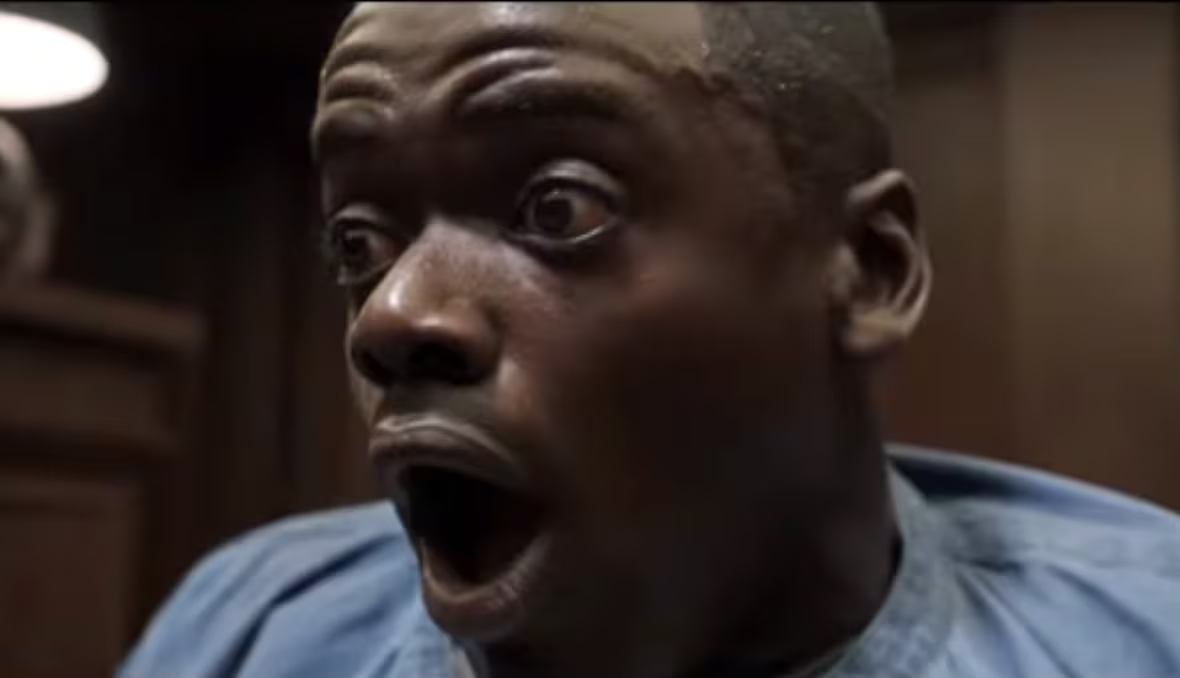Why can't we decide whether Doctor Strange is horror?
Though the film was pitched as Marvel's 1st horror, not everyone is sure it fits the uniquely diverse genre

Outside of the cyclops tentacle monster, zombies, witches, gore, bloodshed and death, Doctor Strange in the Multiverse of Madness flaunts one of the most transparent horror references out there, right there in its title.
The film borrows from H.P. Lovecraft's At the Mountains of Madness, a novella which itself had enough interstellar weirdness to fit a Marvel movie — and quickly became one of the writer's most enduring stories.
Written in 1931, it follows an Antarctic research team who discovered typically horrifying secrets of the ancient "Elder Things" — also known as "Old Ones" — buried in an as-yet-undiscovered range of black mountains.
It helped to launch an entire new genre: Cosmic horror.
Even with the racist themes that so often cropped up in his writing, At the Mountains of Madness and Lovecraftian literature is one of the most pervasive examples of inspiration source material out there.
Everything from Stranger Things, to Locke & Key, to Rick and Morty, to the Mass Effect video games have drawn from it.
And even Doctor Strange's one-eyed monster — officially named Gargantos — is just the film's version of the Shuma-Gorath. The character first appeared in writer Robert E. Howard's story The Curse of the Golden Skull and was later adapted into Marvel comics as a way to bring Lovecraft's "Great Old Ones" mythos into their expanded universe, eventually dovetailing into Doctor Strange itself. (The movie's altered name was simply a way to avoid a copyright dispute.)
So if Doctor Strange in the Multiverse of Madness has such clear roots in the genre, along with the jump-scares, violence and body horror so often associated with it, why can't anyone agree if it really is horror?
Horror or horror-adjacent?
It's because we're really bad at identifying horror, and as it ekes its way further into the mainstream, we're only getting worse.
"Don't worry, Sam Raimi fans. Doctor Strange in the Multiverse of Madness fully goes horror," wrote New York Times editor and movie reviewer Karl Delossantos soon after the film's premiere.
"This is a horror movie," reviewer Tessa Smith similarly tweeted, also making sure to note director Sam Raimi's stamp is firmly there — a source of worry after Doctor Strange's originally intended director Scott Derrickson left over "creative differences."
(Marvel Studios's CEO Kevin Feige later denied the move was because Derrikson wanted to take the movie further into the horror world than they were prepared to go.)
But elsewhere, the most many reviewers could bring themselves to call it was "horror-adjacent," "horror-inspired" or as containing "horror elements." Even the CBC's own Eli Glasner suggests it's "merely the veneer of horror … a fun ride without any real moments of terror."
"I wouldn't say this is a strict horror movie," Chase Hutchinson, a film critic for Collider, said in an interview. Instead, Doctor Strange uses horror tropes and imagery to evoke the genre, without being firmly in it.
He said: "When you look at it as a holistic thing, a few sequences that use the language of horror does not a horror film make."

Much less than a failure, Doctor Strange's creators seemed to be on the same boat, wanting to pull in the excitement of horror fans without actually being labelled a horror movie.
As far back as 2019, Feige had hedged, saying he "wouldn't necessarily say that's a horror film," but a "big MCU film with scary sequences in it."
Raimi responded by saying in an interview that the film has "a flavour of horror to it," while star Benedict Cumberbatch told Esquire Middle East that he was "trying to dumb down expectations" on Doctor Strange being a horror film.
"I think almost definitely it is the most frightening Marvel film of all time," he said. "But I know that doesn't necessarily put it in the same league as The Shining, or of The Exorcism of Emily Rose."
Difficult to define
It's a strange waffling from the team in charge of promoting their film — but not entirely a confusing one.
Horror as a genre-marker has always been hard to pin down, explained Chris Alexander, a filmmaker and horror history professor at Sheridan College in the Greater Toronto Area.
While you can clearly identify a comedy as a comedy if you laugh, an action as an action when you see a car chase, the strict guidelines between horror and drama or thriller — the genres it is most often compared with — are far more difficult to pin down.
It can be harder to separate whether a film is trying to excite you, as in a thriller, or genuinely scare you, like in a horror.
And with the Marvel Cinematic Universe now nearly 15 years old, pitching a new movie as bordering a new genre is an appetizing move — one that's all the more easy to do in the uniquely fungible space of "horror."
"That word, it has always bothered me, because it's just a marketing gimmick," Alexander said. "I mean, it's just a way for a publicist to have easily classified a certain type of film, to market it to a certain demographic."
Even though horror can stretch itself more than virtually any other genre, what has likely kept the Marvel creators from saying they fully dove into horror is how most people think the opposite is true.
More than any other storytelling subsection, people's interpretation of horror is often one-note — and more often than not, that note is negative, said Amy Jane Vosper, a horror scholar and course instructor at Trent University in Peterborough, Ont.
"When we mention the word horror, automatically people think of the slasher sub-genre, as it's kind of come to exemplify horror just in general," she said. "However, horror is so much more nuanced than that. There's so much more going on."
Judging Doctor Strange by how closely it resembles a typical slasher, like Scream, Nightmare on Elm Street or the newer Malignant, would clearly leave it wanting. And the belief that this is how audiences would decide whether the film counts as a horror is likely why its creators veered away from calling it such.
But Vosper said that has less to do with what horror can be and more to do with how bad we are at identifying it.
A genre disrespected
Even though the genre has always made money, critics and audiences haven't always associated the idea of "artistic merit" with "horror."
Going as far back as the '90s, Jonathan Demme's Silence of the Lambs is often cited as the only horror movie to win best picture at the Academy Awards. And even while horror fans have consistently argued whether that movie even counts as a horror movie, Vosper argued that not only is it a horror, but other past winners have been, too.
As recently as 2018, both Jordan Peele's Get Out and Guillermo del Toro's The Shape of Water took home awards at the Oscars.
Both have strong horror elements, Vosper argued — though viewers hardly ever think of del Toro's movie as such. And on top of Peele himself describing his movie as a social thriller, when screenwriter Geoffrey Fletcher presented Peele with an award for the film, he said if Get Out is a horror, then Jaws is a "beach movie."

It's part of a poor understanding of what horror is and can be, said film critic Courtney Howard, and this is despite a slate of atypical films, like The Humans, Take Shelter and The Babadook, redefining the types of stories the genre can tell — and how they can be told.
"The thing with horror movies these days is [they] can be a combination of everything," Howard said. "Whether that be jump-scares, or that feeling of dread that amounts to something that's more powerful and hits you."
So in the end, is Doctor Strange a horror film?
Questions like that have been following the genre since the Universal Classic Monsters series back in the 1930s, said writer and film historian Karina Wilson.
But while what scares us will always change, turning down the dial doesn't necessarily stop Doctor Strange — or any other movie — from being horror. Because it's still the most subjective genre out there — and that's the point.
"Horror is always going to be different things to different people," she said. "And we're going to be arguing about it until the last of humanity is snuffed out."
Corrections
- An earlier version of this story stated Robert E. Howard introduced the character Shuma-Gorath into Marvel comics in 1967. In fact, the character was inspired by one of Howard's short stories, and only adapted by Marvel writers after his death.May 07, 2022 10:15 AM EDT


